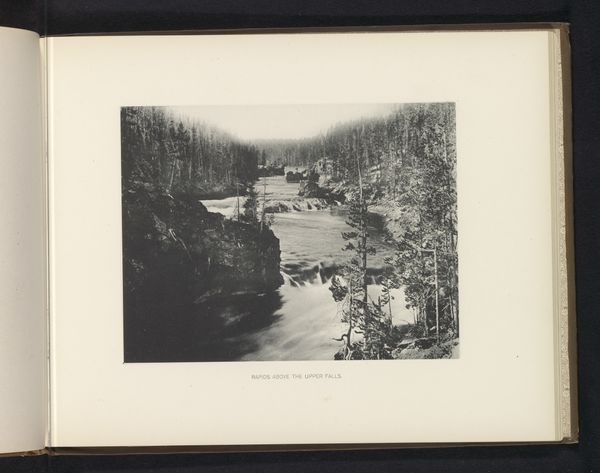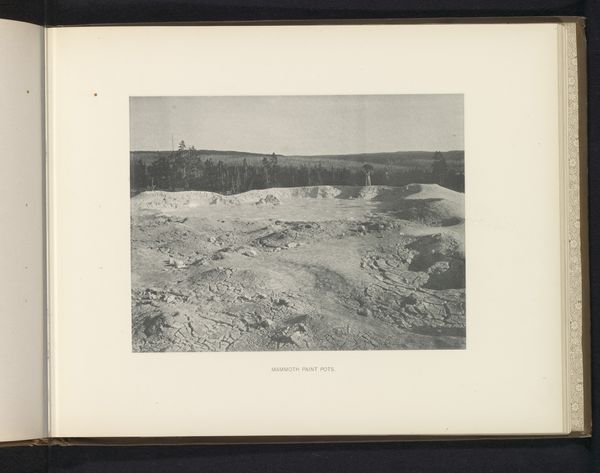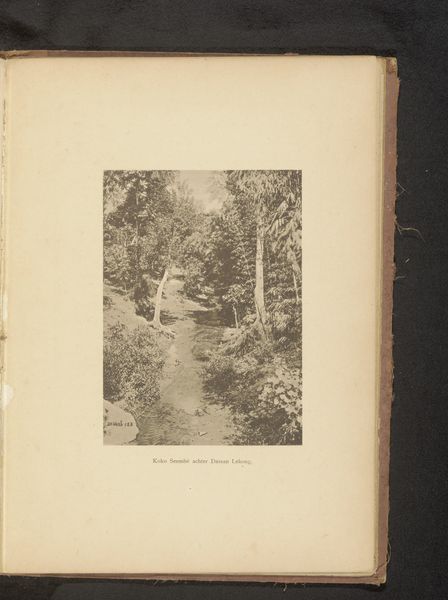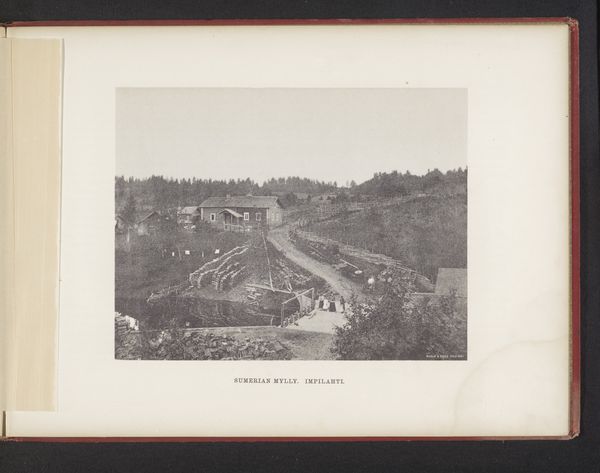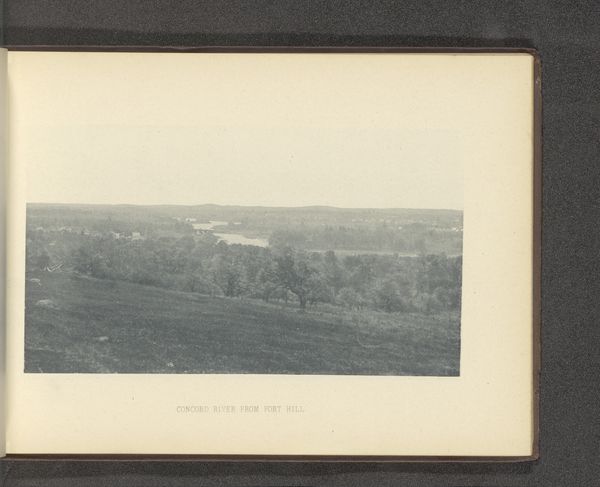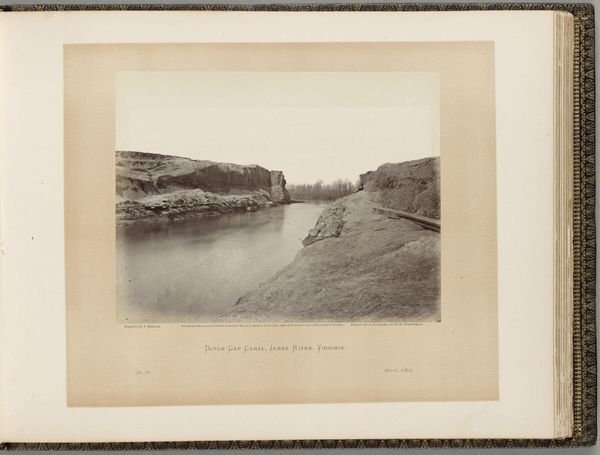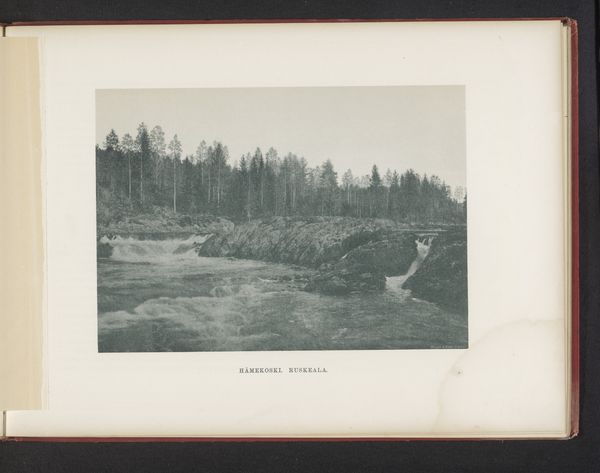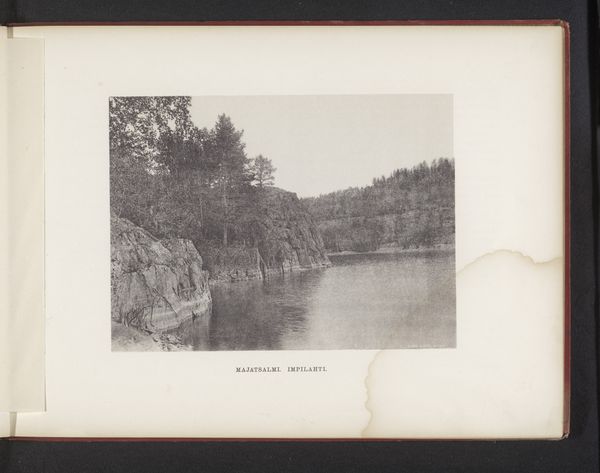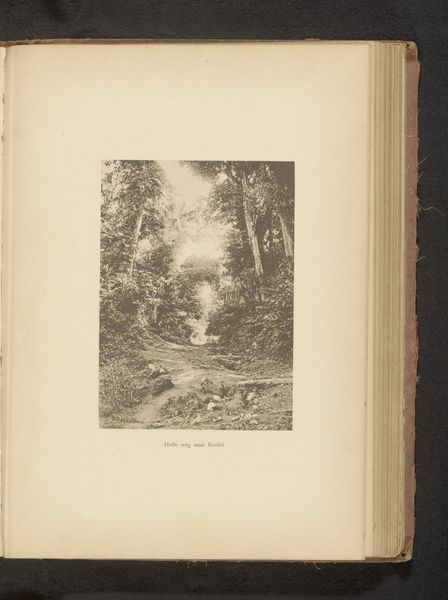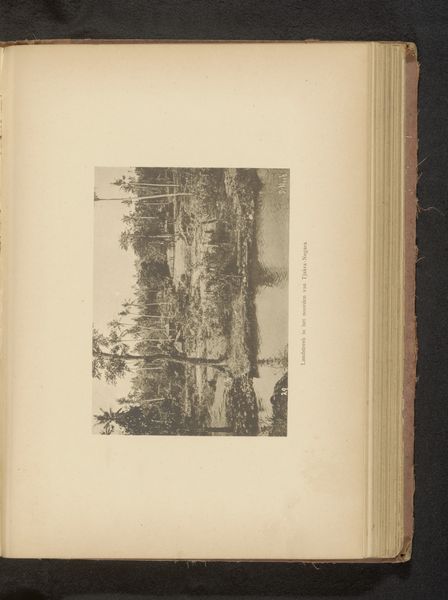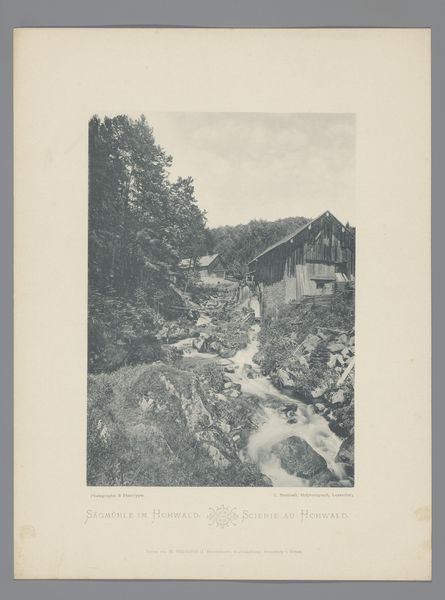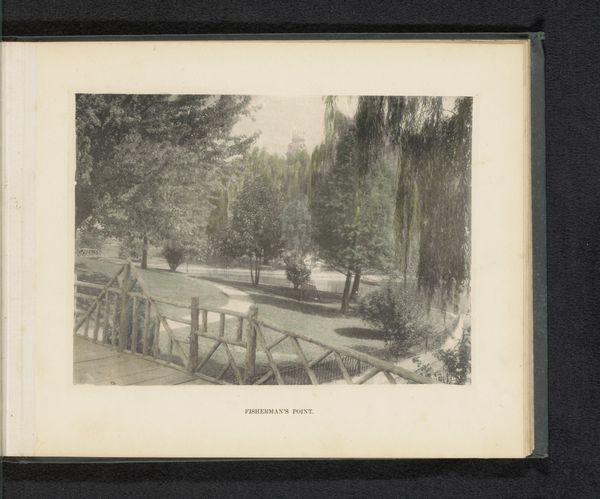
Dimensions: height 201 mm, width 255 mm
Copyright: Rijks Museum: Open Domain
Curator: This print, whose creation we can date to before 1875, shows us a view of Bad Cannstatt in Stuttgart. The artist was Georg Maria Eckert. Editor: Immediately, I'm struck by the silvery tones, like a memory caught in amber. It's both incredibly detailed, look at the trees, but feels emotionally distant. Curator: Pictorialism, as a style, absolutely aimed for that evocative atmosphere. And as a photographic print, it was quite unusual, almost striving for the qualities of painting. Note, especially, the layering, how the bridges punctuate the foliage. Editor: That contrast between the manufactured—the ironwork, the distant buildings—and the chaotic natural world really jumps out at me. There’s an uneasy relationship. Someone had to haul the iron here, assemble this. What were the social and environmental costs to realize that bridge, literally and figuratively, to modernity? Curator: That's an excellent point. I hadn't considered the weight of industrial expansion so directly. What I appreciate is that the technology is used to freeze a moment in time which will evolve naturally, beyond human intentions, or ambitions. Look at the position from where Eckert took this photograph; “Cannstatt (aus der Vogelschau)”. A bird’s perspective, far from labor on the ground. Editor: And this would be replicated, mass-produced as prints in "Album von Stuttgart," driving the value and experience down. Are these structures even still standing? Were they built to last or made to make money? This print preserves something of a moment in Stuttgart's story, not just visually, but as an object with its own history of consumption. Curator: It's quite remarkable to think of its endurance through so many societal changes and shifts in perspectives. This seemingly simple landscape then invites more questions about the story we tell, and perhaps more significantly, don’t tell about progress. Editor: It is. By fixating on the scene we might lose sight of the artist and his craft and materials involved to bring the bird's view into our collections today.
Comments
No comments
Be the first to comment and join the conversation on the ultimate creative platform.
